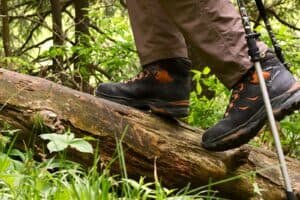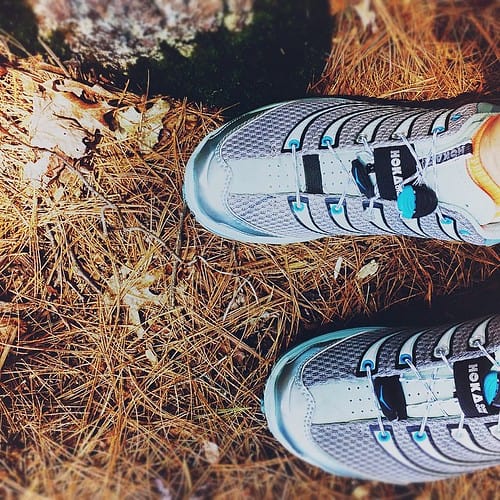Are you excited about your new trail running shoes but worried about the initial discomfort? Breaking in your trail running shoes is crucial to ensure that you have a comfortable and enjoyable experience on the trails. In this comprehensive guide, we’ll explore the “how to break in trail running shoes” process step by step. Whether you’re a seasoned runner or just starting out, we’ve got you covered with tips and techniques for breaking in your new pair of trail running shoes.
The Importance of Proper Footwear

Before we dive into the break-in process, let’s first understand why it’s essential to have the right trail running shoes. Choosing the right pair of trail running shoes is the foundation of a successful running experience. Here’s why it matters:
1. Preventing Painful Blisters and Discomfort
Wearing ill-fitting or new shoes on the trails can lead to painful blisters and discomfort. It’s essential to invest in the right pair of trail running shoes to avoid these issues.
2. Enhancing Your Running Performance
Properly broken-in shoes can enhance your running performance by providing the necessary support and comfort. You’ll be able to run longer and further without discomfort.
3. Reducing the Risk of Injury
Inadequate shoes can lead to injuries such as shin splints and stress fractures. Your trail running shoes play a vital role in protecting your feet and body during your runs.
Step-by-Step Guide to Breaking in Trail Running Shoes

Now that you understand why having the right shoes is crucial let’s explore the step-by-step process to break in your new trail running shoes effectively.
1. Start with Short Runs
One of the best ways to break in your new shoes is by going for a few short runs. These shorter runs allow your feet to adjust to the shoe’s fit and style. It’s advisable to start with runs that are shorter than your usual distances.
2. Gradually Increase Your Running Distance
As your feet become more accustomed to the new shoes, gradually increase your running distance. This will help your feet adapt to the shoes and prevent blisters and discomfort during a long run.
3. Pay Attention to Your Feet
During the first few runs, pay close attention to your feet. Look for any signs of discomfort, pressure points, or hot spots. If you notice any issues, make necessary adjustments.
4. Wear Proper Running Socks
Don’t underestimate the importance of proper running socks. Socks can greatly affect the comfort of your run. Choose socks that fit well and are suitable for trail running.
5. Choose the Right Size
Ensure that you have the right size of shoes. It’s not uncommon for runners to wear the wrong size, which can lead to discomfort and blisters. If your toes feel cramped or there’s not enough room in the toe box, consider getting a size larger.
6. Don’t Rush the Process
Breaking in new shoes is not something that can be rushed. It can take several runs before your shoes feel comfortable. Be patient and give your feet time to adjust.
7. Rotate with Your Old Pair
If you have a previous pair of trail running shoes that are still in decent condition, consider rotating them with your new pair. This can help you transition more smoothly and reduce the stress on your feet.
8. Experiment with Socks
You can experiment with different sock styles and thickness to find what works best for you. Some runners prefer thinner socks for a snug fit, while others opt for thicker socks for added cushioning.
9. Consider Multiple Pairs
If you’re a dedicated trail runner, having multiple pairs of well-broken-in trail running shoes can be beneficial. This way, you won’t need to break in a new pair every time.
Your Running Style Matters
It’s important to note that the break-in process can vary depending on your running style and the specific shoes you’ve chosen. It’s a personal journey that requires patience and attention to your body’s signals. Your feet are unique, and what works for one runner may not work for another.
The Role of Foot Strike in Breaking in New Running Shoes

Understanding Foot Strike
When you get a pair of new running shoes, one aspect often overlooked is your foot strike. Foot strike refers to how your feet make contact with the ground while running. It can vary from person to person and may influence how you experience the break-in period with your new shoes.
- Heel Strike: Some runners naturally strike the ground with their heels first. If you’re one of them, the break-in period may involve adjusting to the shoe’s cushioning and support in the heel area. New shoes may feel stiff at first, but with time, they’ll adapt to your stride.
- Midfoot Strike: Others tend to land on the middle part of their foot. Breaking in new running shoes for midfoot strikers may involve adapting to the shoe’s arch support and overall midsole cushioning. It’s crucial to give your feet time to adjust to this unique fit.
- Forefoot Strike: Forefoot strikers make initial contact with the ground using the front part of their foot. For them, the break-in period may be about getting used to the shoe’s forefoot cushioning and flexibility. As your feet adjust, the shoes will become more comfortable.
Racing Shoes and the Break-In Period
If you’re a competitive runner or training for a race, you may be wondering how the break-in period applies to race shoes. Race shoes are typically designed for specific events, and they may have different characteristics than your regular training shoes.
- Minimal Break-In Required: Race shoes are often designed to be lightweight and responsive. They may require minimal break-in compared to regular training shoes. However, it’s still essential to wear them for a few shorter runs to get used to their unique feel.
- Testing Under Race Conditions: Before using your race shoes in an actual race, it’s a good idea to test them in training to ensure they feel comfortable and perform well. The break-in period for race shoes should ideally include runs at race pace or similar conditions.
Dealing with Swelling Feet and Ensuring Proper Fit
Feet Swelling During Runs
One factor that can significantly affect your experience with new running shoes is how your feet swell during runs. It’s not uncommon for feet to swell, especially during longer distances or hot weather. Here’s how to manage this aspect during the break-in period.
- Account for Swelling: When fitting your new shoes, consider how your feet may swell during runs. Choose a size that provides enough room for this expansion without feeling too loose when your feet are at their normal size.
- Lacing Techniques: Proper lacing techniques can help accommodate swelling. Loosening the laces slightly or using a runner’s loop (a small loop at the top of the shoe’s laces) can provide extra room for your feet to swell without sacrificing a secure fit.
Ensuring a Proper Fit
Getting the right fit for your new running shoes is crucial not only for comfort but also for preventing injuries. Here’s how to ensure that your shoes fit correctly during the break-in period.
- Measure Your Feet: It’s a good practice to measure your feet before buying new running shoes. Feet can change over time, and it’s essential to know your exact size.
- Try Multiple Pairs: Don’t settle for the first pair that looks good. Try on several pairs and walk around the store to ensure they feel comfortable and fit well.
- Footwear Specialty Stores: Consider shopping at specialty running stores where knowledgeable staff can assist you in finding the perfect fit and style based on your running needs and foot shape.
Understanding your foot strike, adapting to race shoes, and accounting for swelling feet are crucial factors to consider during the break-in period for your new running shoes. A proper fit and patience in allowing your feet to adjust will lead to a more enjoyable and comfortable running experience.
Final Thoughts: How to Break in Trail Running Shoes
Breaking in your new trail running shoes is a crucial step towards enjoying a comfortable and injury-free running experience. Remember to start with short runs, gradually increase your distance, and pay attention to your feet. Choose the right socks and shoe size, and don’t rush the process. With the right approach, you’ll have a well-broken-in pair of trail running shoes that will support you on your running adventures.
In the world of running, having the right footwear is a game-changer. So, wait no more, lace up your new trail running shoes, and hit the trails for an enjoyable and comfortable experience. Your feet will thank you!
